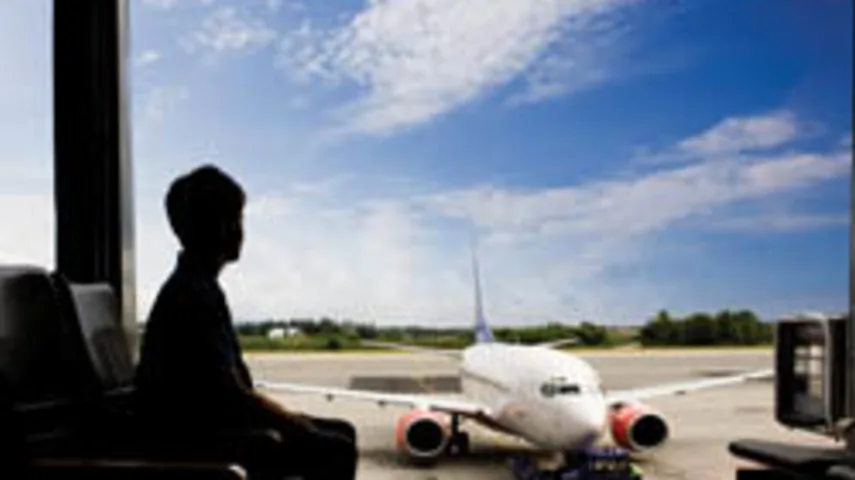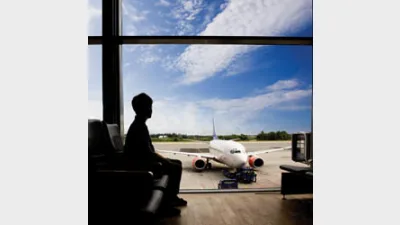Infrastructure: Turbulence creates opportunity in airports



The aviation industry has been a tough place ever since the heroic feats of Kingsford Smith and Lindbergh in the 1920s. The industry has endured wars, oil crises, recessions, pilot strikes, terrorism, flu pandemics and now a global financial crisis. Demand has been vulnerable to these external shocks in the short term, but has recovered to trend within a few years.
It’s this trend that should excite long-term investors. International passengers from Australia have grown at a compound rate of 8.3 per cent since 1970, compared to just 3.2 per cent for the broader economy. Strong underlying demand reflects structural growth drivers like globalisation, increased wealth and falling real airfares. Low-cost carriers have stimulated demand for leisure travel but have fragmented the airline industry in the process.
So how can you get exposure to this growth without all the risk? Airports offer high barriers to entry, stable pricing and increasingly diversified revenue streams that are less sensitive to fluctuations in volume. The globally listed airport sector is capitalised at over $40 billion, providing exposure to a diverse range of airports including Auckland, Beijing, Cancun, Sydney, Vienna and Zurich. The sector could expand significantly with the governments of Brazil, India, Portugal and Spain planning to privatise their airports in the coming years.
So what makes a good airport investment? Airports with a strong hub airline offering a choice of destinations and departure times have tended to be more resilient. Passenger numbers at London Heathrow were down just 3 per cent in June 2009 compared to a decline of 14 per cent for the business-focused London City. Passengers at Zurich actually rose 1 per cent as the Lufthansa-backed Swiss airlines added capacity, while Rome fell 10 per cent as Alitalia collapsed into another restructuring.
Airports with diversified revenue streams tend to generate higher and more predictable returns. Some airports generate more than half of their revenues from commercial activities, like retail, car parking and real estate. Minimum guarantees built into duty-free concessions and long-term property leases are examples of how airports are reducing the impact of passenger volatility.
In a light-handed regulatory environment, these commercial activities can also generate higher returns. According to the Australian Competition and Consumer Commission’s regulatory accounts for 2008, Sydney Airport earned a fair nine per cent on aeronautical assets but an exceptional 24 per cent on non-aeronautical assets.
Airports have significant potential to expand operating margins, particularly from a base of public ownership. Inefficiency has been reduced by outsourcing low margin services like ground handling and basic maintenance, while administration costs have been halved. Regulation also plays a critical role on the cost side. Airports have been hit with significant costs related to mandated security requirements, and not all airports have been able to pass these costs on to airlines.
Airport capital expenditure tends to be patchy due to the scale and required planning approval of new runways or terminals. London Heathrow Terminal 5 was developed at a cost of £4.3 billion and took 19 years from initial design to opening.
Timing and return on investment are critical. Airports that have embarked on large capex programs at the top of the cycle or without clear tariff outcomes tend to underperform. Conversely, positive share price performance typically relates to periods of positive free cash flow following a significant expansion.
Airports are high-profile assets with many stakeholders. Airport expansions need to be sensitive to environmental and social impacts or risk costly delays. Governance in the airport sector is typically below par due to conflicts of interest with state or controlling shareholders. Focused management backed by an independent board is desirable.
The greatest risk to any investor is the price you pay for the asset. Credit-fuelled demand for these scarce assets saw a number of airports acquired at extraordinary multiples in 2006-07. Offers by unlisted infrastructure funds for London City and Chicago Midway airports topped 25x earnings before interest, taxes, depreciation, and amortisation (EBITDA), compared to historic ranges of eight to 10 times. But the world changed. Listed airports were affected by general market volatility in 2008 and all airports saw lower passenger demand in 2009.
Here lies the opportunity. Listed airports are trading at historic-low multiples on below-trend earnings — some even below book value for assets that can’t be replaced. Airports are unique growth assets but are not without risk. Next time you are queuing at the airport, think of it as an investment opportunity — and perhaps select a manager you trust to perform a security check.
Recommended for you
In this episode of Relative Return Insider, host Keith Ford and AMP chief economist Shane Oliver discuss the latest shock consumer price index numbers, which rose to 3.8 per cent in October, as well as the shifting US market and calls for super funds to invest in infrastructure projects.
In this episode of Relative Return Insider, host Keith Ford and AMP chief economist Shane Oliver discuss the Reserve Bank of Australia’s cautious stance in response to persistent inflation, subdued growth prospects, and political shifts affecting the nation’s journey towards net zero emissions.
In this episode of Relative Return, host Laura Dew speaks with Rachel White, head of financial adviser services at Vanguard about how advisers can help Australians to feel confident in retirement.
In this episode of Relative Return Insider, host Keith Ford and AMP deputy chief economist Diana Mousina take a look at the Reserve Bank’s unanimous decision to leave rates on hold on Melbourne Cup Day and whether future cuts are still on the cards.








